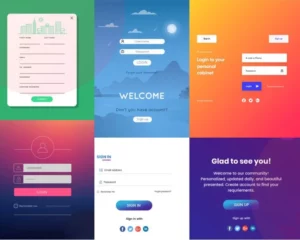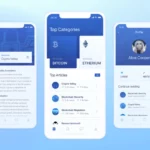Do you know why companies failed to adapt to recent times?
Digital companies like Kodak, Nokia, Yahoo, cloth stores like JCPenney, Abercrombie & Fitch, or car companies like Hummer. Once known for their good sales or pioneer have failed to adjust to the recent challenges. Although they were different reasons for their existence, they all failed in judging two things,
- Failed to accept the change that was already coming.
- Failed to analyze their competitors.
Although they were the bright band in a particular area, over time, their competitor who pitched themselves late in the same market could attract more customers than the pioneers. There might be many reasons the companies fail, but let’s see the other side of the story.
- How do startups and small competitors gain popularity and compete with giants in the same marketplace?
- How did they pitch themselves before they start their business?
- How did they investigate their competitors and themselves and pull in the customers of competitors?
- How did they niche a particular area of their marketplace?

Table of Contents
Competitive analysis:
All the above questions point to competitive analysis. It might be true that your team is naïve and just entering the market. But how can you make sure that entering the existing market with your ideas and niche will get you success? Studying how the current digital solutions address young minds is becoming crucial.
We know competitive analysis as competitor analysis or competitive audit, which stands to all points to understanding your competitor, their strengths and weaknesses.
Being competitive is about knowing what is there in the market, what is working and what doesn’t work, and what it can change. Competitor research on competition is a crucial business strategy. The firsthand knowledge of the good and bad user experiences of competitors’ service, followed correctly, provides the treasure, the mental model of users, and the niche for your success.
Before getting to know what is competitive analysis, let s know the major benefits of doing analysis:
- Gives first-hand knowledge of user experience. Maybe it’s good or bad.
- Your team can learn about your competitors, their design, the customer base, and the segments.
- It boots the idea generation, brings idea what they can well.
- Considering a few innovative things that others at least do well, like pitch in the technology in case others failed to do it.
Apart from the benefits we have seen, it also helps to answer the questions like:
- Why would someone choose your product or service instead of an existing solution?
- What can you offer more or differ from your competitors? By asking and brainstorming it shows how and where is your stakeholder’s product or service regarding its competitors where it stands.
- You gain domain knowledge. If the niche is new to you, analyze your competitors for a better idea of your niche.
- It creates the input for the next parts of the UX process. These inputs will be the basis of your business and the strategies you create to pitch in your market segment.
- You are going to be looking at the competition solutions from the user perspective.
- And the most important, the areas to avoid, so you won’t repeat the same mistakes of your competitors.
Prerequisites for competitive analysis:
Ideally, you should also conduct UX research before starting the competitive analysis. So it’s easy for you to define the user’s needs, motivation, understanding their context, problem space, the technical and environmental constraints. So consider interviewing your stakeholders for a better idea of business, some research techniques like customers survey, or interviews to whole their mindset.
Remember, the goal is not copying someone else product, service, or certain parts. So you or your stakeholder have unique business goals and context and so do the users.
A point to remember is what works for others may not work for you, besides you don’t even know for sure if things work for the competitor or not. As you will target to fill the gaps created by the competitor, you will be a solution for your competitor’s market segment.
Ultimately, conducting this analysis will support the design decisions throughout the UX process.
The first step for competitive analysis:
Once you identify the goal, the new product additions or change the service, additional features, the niche, and things that are supposed to be done.
- The first step is to find competitors or create a list. Here, the goal is to devise a solution to your advantage. Give importance to the details of the market research. The tools for market research will allow you to look beyond the competitive landscape with inconsistency and gaps. These gaps will provide you with the value of innovation.
- Involve the stakeholders, or conduct the stakeholder interviews to understand their business. Ask the users about the market segments or the product they use. Identify the targeted users for your business. If the market segment is already present for your business, you can find what are changes happening in the market or what changes your existing user would require. Remember, rules change, denying the changes in the market will surely bring your business down.
- Include both the direct and indirect competitors. Since the apps and webs are making a great market. It’s unnecessary to assume your competitor will just have a physical store. The digital transformed the way of service, if your competitor is not in the digital space, then feel yourself are lucky.
- List two keywords to attract your users. Try out permutations to make your user understand your business.
- Go for a panoramic view, not only the mail competitors but also the new players. Some companies deny the existence of new players, cannot analyze their existence, and lose their market share because they fail in the idea of competitiveness.
- Zoom-out, e.g. analyze for a second-hand game console marketplace or other online use stuff marketplace and don’t stick
- Even if the product service is restricted to a country, consider checking out similar products/services offered in any other country.
Different countries have different user behavior, adjusting to the user’s mental model, but can help broaden your views.
Nutshell:
Nowadays, bringing an idea into reality is tough. You already have a lot of competitors doing well in the market. But you can change the scenario for yourself. Find the niche in changing market and offer things that your competitors don’t offer. Unless you convince your customers your offer better service than others, you won’t be able to sustain itself in the market.











